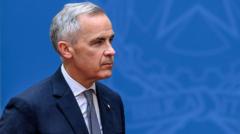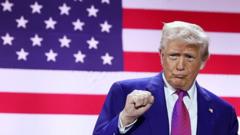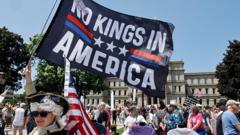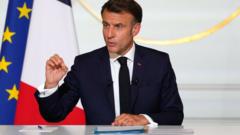**In a pivotal election, the Liberal party's Mark Carney emerges as a contender against the Conservative Party led by Pierre Poilievre amid heightened fears over Donald Trump's influence and economic policies.**
**Canada's Election at a Crossroads: The Impact of Trump and Economic Turmoil**

**Canada's Election at a Crossroads: The Impact of Trump and Economic Turmoil**
**As Canadians head to the polls, the outcome hinges on navigating Trump's trade threats and local economic distress.**
Current time in Ottawa 7:54 p.m. April 28
Live Updated April 28, 2025, 7:54 p.m. ET
Live Updates: First Polls Close in Canada as Voters Choose Leader for Tumultuous Moment
Results are expected late Monday in an election that initially favored the Conservative Party but was reshaped by President Trump’s trade war, leading to a surge in support for the Liberal Party.
Full report from Yellowknife, Northwest Territories, by Pat Kane for The New York Times; Mississauga, Ontario, by Ian Willms for The New York Times; Montreal, by Nasuna Stuart-Ulin for The New York Times; Ottawa; and Andrej Ivanov/Getty Images
Canadians are heading to the polls for a critical election that will shape the nation's leadership amid President Trump's trade threats and economic uncertainties. More polling stations will close this evening, with results expected late Monday.
Before the election, surveys indicated the Liberal Party, led by Prime Minister Mark Carney, had slightly edged ahead of the Conservative Party, under Pierre Poilievre's leadership, in the race for parliamentary seats. The winning party will have the most members in the House of Commons, which comprises 343 seats.
Just a few months ago, the Conservatives appeared to hold a commanding lead of over 25 points, with Poilievre positioned comfortably to assume the role of Canada’s next prime minister. However, Justin Trudeau's resignation in March, coupled with concerns over Trump’s tariffs, dramatically altered the landscape. Voters are now looking to Carney and the Liberals as potential champions against Trump's encroachments.
In this election cycle, polymorphous political dynamics are unfolding with three additional parties also competing: the New Democratic Party, the Greens, and the Bloc Quebecois—each anticipated to capture fewer parliamentary seats.
Carney, age 60, steps in as prime minister amid crises, bringing extensive experience from his tenure as a central banker and having recently been appointed as the leader of the Liberal Party. As a longstanding centrist with high-level expertise, he promises to shield Canada from U.S. tariffs and maintain economic stability.
Conversely, Poilievre, 45, a seasoned politician advocating for a leaner federal government, faces criticism for his similar stance to Trump, with many Canadians viewing this alignment negatively during such a tumultuous time in bilateral relations.
Polling hours across Canada are staggered to accommodate its vast geography, with many polling stations closing at 9:30 p.m. ET. The initial results from Newfoundland marked the start of the unfolding narrative regarding where Canadian voters lean amidst rising pressures from the neighboring United States.
In a surprising development, social polling indicates that climate change, once a priority issue, has fallen by the wayside in this election, overshadowed by immediate economic and sovereignty concerns due to Trump's threats. Carney, despite his background in climate policies, has significantly adjusted his campaign strategy to focus on U.S.-Canada relations rather than climate action, which was once on the forefront of political discussions.
The influence of immigration policy also waned leading up to this election. Following critiques of Trudeau's previous immigration policies which were perceived to pressure healthcare and housing, voters are now expecting viable solutions to alleviate these situations rather than focus on new immigration proposals.
As the polling results begin to filter in, it’s evident that this election reflects broader anxieties over Canadian sovereignty, economic resilience, and how best to navigate the complex dynamics introduced by U.S. politics. The choice facing Canadians today could define their future independence and economic stability. As Mark Carney's Liberals and Pierre Poilievre's Conservatives vie for power, the outcomes of this election may reshape the political landscape for years to come.





















